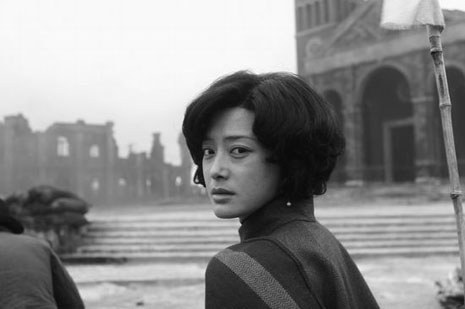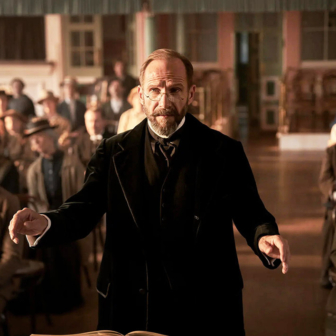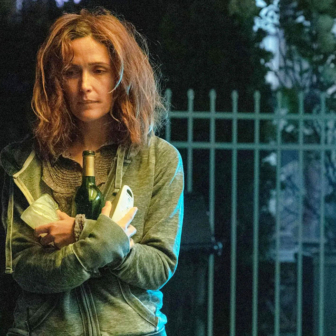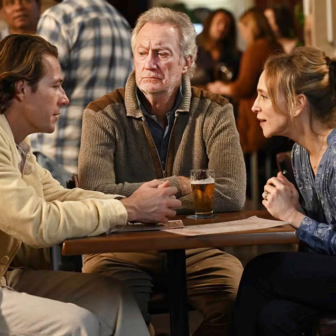THIS AUTUMN and winter, Sydney is sheer cultural overload. While the town has been lit up with Vivid, the Laurie Anderson–Lou Reed lightshow extravaganza, down on the wharves the writers’ festival unrolled as a fair blockbuster: some 250 mainstream events, twenty-nine workshops on writing and publishing in every possible genre, and outliers in suburban venues stretching to the Blue Mountains. Major sessions with visiting celebrities were sold out – extraordinary numbers lined up, and paid up, to hear Christopher Hitchens talking about himself. But there were equal crowds too for the splendid Chinese-American novelist Yiyun Li, for Dubravka Ugresic, John Ralston Saul, Colm Tóibín; and the Sydney Theatre was packed to the rafters to hear an amazingly gentle discussion between John Faulkner and Alan Ramsey. Big rooms were full for panel discussions on climate change, race relations and possible political futures; smaller ones likewise for such Indigenous poets and storytellers as Marie Munkara, Lionel Fogarty and Ali Cobby Eckermann. There were passionate polemics against the Intervention; this event is about many things besides literature. In the queues I heard people talking of “the hunger for ideas,” but I’m more conscious of the suburban-grounded desire for the urban meeting-place; for the agora.
There’s time to draw breath before the Sydney Film Festival which, similarly, is many things besides cinema; an invitation to virtual space-travel round the globe and across time. Again the queues and crowds, this time packing into the State Theatre and others along George Street and down at the Quay, people hurtling from one venue to the other. Watching films inside this program is not the same as doing so in your local Dendy or Hoyts; you’re away from home, in a feverish, crowded village, and the films jostle against each other. This time there are Dracula films and vampire films and a huge number of features which I’ve had no chance to see (a good many will come to general release). You have to cope with imaginative cacophony; at the State on 3 June, Two in the Wave, a wonderful piece of retrospect on the varying roles of François Truffaut and Jean-Luc Godard in the French revival of the early 1960s. This, ostensibly, was an art-film piece; but it was more. The famous rift between Godard and Truffaut was a moment in the century-long argument about art and politics, and one we can’t sort out when Godard’s later forty years of political essays on film are scarcely available to be seen. (Now there’s a real job for film festivals…)
Then, later the same day, to another place, another time altogether, and the festival’s most rewarding excursion into local memory and history: John Hughes’s rich, brilliant and deeply researched Indonesia Calling: Joris Ivens in Australia. Like Hughes’s earlier Film-Work and The Archive Project, with which it forms a continuing sequence, this takes us back to the immediate postwar years and the work of a long-gone, cinema-conscious left. In 1946, when the Netherlands sought to reclaim its possessions in what had been the Dutch East Indies, and their former colony struggled to become Indonesia, Sydney’s wharf-workers assumed solidarity and placed a boycott on Dutch shipping. It so happened that the great Dutch filmmaker Joris Ivens was around at the time, ostensibly working as a film commissioner for the Netherlands government. Deserting that role, he joined in the boycott and, anonymously, coordinated a film record of these events, at the same time incurring hostility and suspicion from the busy personnel of Australia’s nascent cold war surveillance; ASIO was just tooling up at the time.
Here that film is retrieved, reassembled, and integrated with interviews, documents and commentary from a wonderfully obsessed and knowledgeable film historian of the left, Graham Cutts. Memories come also from a prolific documentary film-maker who, through numerous roles and marriages, became her own legend, Catherine Duncan (1915–2006). She appears with high-forties glamour, speaks with patrician arrogance, and throws more light than she would have known on an Australian chapter far more complex and creative than any print historian has seemed to know. For all sorts of interesting reasons, they’ve shied away from the left; John Hughes, crowding the imagery with traces of that past, has given us here a whole book’s worth of history, analysis, and art. I’d seen this on DVD; the big screen event brought more reward, and on that scale it deserves wider circulation.
So does a magnificent Chinese war film, Lu Chuan’s City of Life and Death, more than two hours of demanding and astonishing viewing. With, seemingly, a cast of several thousand, we’re given massed ballet and drama on the Nanking massacre of 1937–38, when the invading Japanese destroyed the city, murdered some 300,000 citizens and raped countless women (anything between 20,000 and 80,000); the unarmed victims included young girls and children. The figures are always in contention, and this history remains a set of issues between the two nations; the film’s account manages to be uncompromised, but at its end there is a reaching toward peace, if not forgiveness for the unforgiveable. The film takes up various diaries and eyewitness accounts by survivors, and from westerners who chose to remain through the siege in order to protect the Chinese around them. One of those was a German and a Nazi, John Rabe (a truly complex case); others were journalists, and the missionary John Magee, who hung in to make his own 16mm documentary on the events.
City of Life and Death is something more than an illustration of major historical trauma. The credits tell us that it’s a China–Hong Kong co-production, and we can perhaps imagine a level of political agreement on emphases. Individuality is subordinate to the crowd – in brave insurgency, or in widescreen devastation by mass murder; there are just a few special heroes, and a doomed heroine; and (in the best war-film tradition, among the sadists) an anguished Japanese officer, who in the end will allow a child to live and walk into the future.
The early days of the festival yielded another huge and wonderful film-essay, Frederick Wiseman’s La Danse: The Paris Opera Ballet. Most of Wiseman’s thirty-nine films are long, rigorous explorations of institutions: a high school, a prison, a hospital; the famous early work, Titicut Follies (1967), searched out the workings, for good and ill, of a prison for the criminally insane. Sometimes the viewing can be an ordeal, but one we need to undergo. La Danse is different, offering pleasurable excerpts from ten ballets, ranging from the familiar schmaltz of Nutcracker to far more challenging modern works, among them Pina Bausch’s Orphée et Eurydice; but the point of the film is the work, the relentless training and rehearsal, the upkeep of the vast and glorious old theatre from its basements to its ornamented ceilings, with the work of cleaners, carpenters, painters, seamstresses, laundry workers, bureaucrats and money people, and the man who tends a hive of bees on the roof, looking across Paris. This film is two and a half hours long, and worth every minute.
More of the festival to come. •





